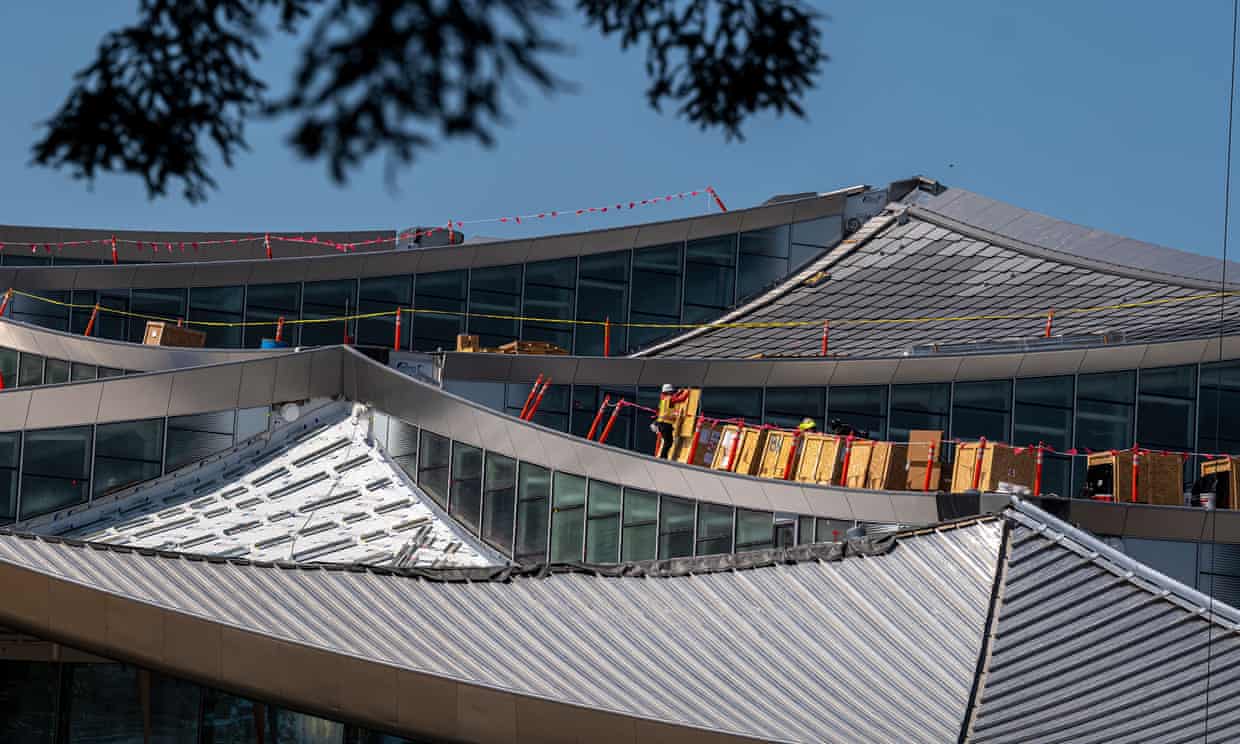Google’s ‘dragonscale’ solar-powered roof signals growing demand for sustainable workspaces
"Tightening regulations and a growing eco-conscious workforce are major factors in heralding green office campuses.
About 40 miles south of San Francisco, three futuristic structures rise from the earth. With sloping roofs clad in thousands of overlapping tiles, the buildings could be mistaken for the world’s most architecturally advanced circus tent.
They are, in fact, part of Google’s new Bay View campus, which is due to welcome employees this year – pandemic allowing – and is situated a few miles east of its existing HQ campus in Mountain View. . .
[...]
Corporations have never been under more pressure to follow through and make meaningful progress on carbon emissions from regulators and amid greater scrutiny around “greenwashing” from environmentalists – and their own employees.
Demand for low-emission offices is larger than it ever has been, according to several US architects the Guardian spoke to. That’s especially true in California, where manifestations of the climate crisis are obvious: hotter summers, drought and an annual wildfire season.
“Buildings are awful for the environment,” said Eric Corey Freed, the sustainability director at architecture firm CannonDesign. “If we’re going to solve climate change, we have to fix our buildings.”

In the US, buildings consumed around 40%of the country’s electricity in 2020, according to data from the US Energy Information Administration, and are also one of the planet’s biggest emitters of greenhouse gasses, accounting for 37% of the world’s energy-related CO2 emissions. That’s not including all the emissions from refrigerants – chemicals that maintain air conditioning systems and refrigerators – which have a global warming potential that’s hundreds to thousands of times higher than carbon dioxide.
Designers must consider the “operational carbon” of running the building and the “embodied carbon” of creating it, such as the emissions from producing materials, constructing the project and transporting waste offsite. . ."
> NOTE: “There are carbon emission laws where building owners are being required to essentially increase their carbon efficiency … and if they don’t, they’re being fined,” said Chatto, the architect at ZGF.
These signals are changing how investors think about their buildings. “At least some of our clients are recognizing they’re going to hold on to the building for 10 years. Then when they want to sell and recoup and make a profit on their investment, it could be a very, very different world 10 years from now,” he said.
> NOTE: With its pledge to become carbon free, Google is attempting a bold feat. The goal is a steep one, especially since it’s not only responsible for the output of its campuses, but massive data centers housing its servers. It’s worth noting that Google’s plan does not account for the company’s scope 3 emissions – emissions that tie back to the company, but that the company may not control. These include the manufacturing, production materials, and transport of Chromebooks and Pixel, according to Grist.
Though this isn’t foul play, it’s a shortcoming of the net-zero metric and applies to companies across the board. . ."



No comments:
Post a Comment